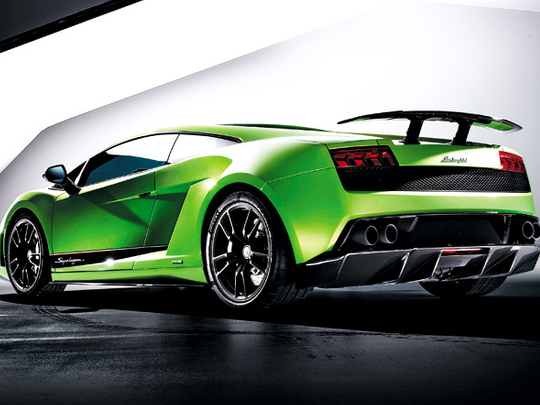
They're like dates initiated on a match-making website. Car shows, you know. You log on, find the profile you like, it's mutual, and then you meet the person in, er, person, at an Italian restaurant. You know what to expect, you've seen the photos…
Car shows today are like that. Point being, all the ‘world premieres' and ‘debuts' have been seen a thousand times already during the build-up to the show, thanks to the vastness and global reach of the internet. Nothing is a surprise, since the manufacturers whip up hype for weeks with hope of getting extra ink in the press. Come show time, you've seen it all already. Gone are the days of walking up to a booth and being genuinely shocked at what's on display.
Imagine the furore caused when Jaguar took the veil off the E-Type to an unsuspecting public in Geneva 1961? The fastest, most beautiful car of the day (even Enzo Ferrari reportedly admitted it was the most beautiful car ever made), coming at them like a herd of buffaloes, totally unexpected. If I was there in person, I would have probably ran and hid in the toilet from the sheer astonishment. Or maybe just stood there and wept at the gorgeousness of it.
Geneva being Geneva, and Switzerland being the home of oddballs like Rinspeed and Sbarro, you can thankfully always expect at least a couple of semi-surprises, such as Rinspeed's scuba-diving Lotus or Sbarro's four-wheel motorcycle (um, isn't that called a car?). But what actually hit us in Geneva was way above our expectations here at wheels.
Not only has Geneva's expo centre been packed brimful with magnificent supercars, they also made sure that these snuck into the seven halls with the utmost secrecy. And the most secretive of all was a very, very sneaky Porsche.
And it can do that, be sneaky, because this high-performance, mid-engined 918 Spyder prototype with plug-in hybrid technology can run on silent electric power alone. The green accents dotting the body, brakes and interior hint at its environmental serenity, although there's nothing serene about a 9,200rpm 3.4-litre V8 developing over 500bhp. Power is transmitted to the wheels by a seven-speed PDK, which also takes care of delivering the extra 218bhp courtesy of the electric motors.
And if you haven't put two and two together yet, let me remind you that 3.4 litres is also the capacity of Porsche's racing engine dropped into the RS Spyder — it's a family affair. And the roots go deep down in the Porsche family tree when it comes to the 918 Spyder; it's just one digit off the legendary 917, a car that dominated Le Mans and CanAm with its turbocharged flat-12 producing up to and over 1,500bhp in qualifying trim, while weighing below 900kg.
The fuel crisis hit hard in the Seventies though and the 917's gulping 12 cavities rendered the racer obsolete. Now the 21st century 918 has similar fuel concerns to tackle, which is why Porsche has designed it with the possibility of emissions levels of just 70gm/km of CO2 with a fuel consumption of up to 94mpg.
Expect the equation that gave them this figure to boggle even Stephen Hawking, but anyway, the undoubtful figures stand at 3.2 seconds to reach 100kph and a top speed of over 320kph.
Oh, and put Walter Röhrl in the driver's seat and the 918 Spyder will lap the ‘Ring in less than 7:30 — faster than the Porsche Carrera GT and 911 GT2. It's also probably fair to say that it looks pretty amazing. The lightweight body structure of the 918 Spyder is made of carbon-fibre-reinforced plastic, while generous doses of magnesium and aluminium not only reduce weight to less than 1,490kg, but also ensure supreme driving precision.
Now, don't stomp your feet in anger if you feel your petrolhead needs are left out by the green focus here, because if Porsche uses hybrid technology for super speeds and efficiency, then who are we to complain?
It's win-win, even though the supercar game is definitely changing. And if you were in Geneva, you only had to take a step away from Porsche's stand to the other side of Hall 6 and commence drooling in front of Citroën's Survolt concept.
This sensational blend of exuberant styling and hints of motorsport points towards the French carmaker's future of coupés. Its environmentally-conscious all-electric drivetrain delivers thrills in complete silence; good or bad, depending on your side of the fence.
Compact dimensions — at 3,850mm, the Survolt is only half a foot longer than a Mini — full of flowing lines focus on aerodynamics, to maximise speed and economy.
And just like the ultra-chic Revolte concept preceding it, the Survolt gets two-tone paintwork as well as a glazed cockpit area. While it may make a much more unlikely production car than Porsche's 918 prototype, the Survolt proves Citroën's direction towards a green sportscar future.
Yet, Swedish hypercar maker Koenigsegg is living the future now. Even its first 2006 CCX models ran on E85 (hey, at least it's a little cleaner) and now the company has launched an ultra-focused 910bhp track car called Agera.
While it's not nearly as dramatic in styling as the German and French offerings, the super-Swede is basically an evolution of the CCX, with vortex-generating wheels and tail lamps sporting a hole in the middle to extract air from the mid-mounted engine. Oh, and by the way, when fed some E85, that engine is good for 1,100Nm of twist and is tasked with pushing just 1,285kg of weight — 80kg less than an Enzo.
And that brings us to the Italians, who had everyone green with envy in Geneva. The Lamborghini LP570-4 Superleggera and a vettura laboratorio, or experimental vehicle, hybrid Ferrari based on the 599 GTB were the greenest cars on display, literally.
Although Sant'Agata's offering is purely performance-orientated, the means of achieving that performance resulted in efficiency gains too.
Despite being more powerful with 562bhp from the 5.2-litre V10, it's also 70kg lighter than the standard Gallardo boasting a total dry weight of 1,340kg. Mostly due to heavy use of carbon fibre components both inside and out. Together with direct fuel injection, contributing to 20.5 per cent lower CO2 emissions, the Superleggera plays a part in Lamborghini's environmental campaign.
The 0-100kph sprint now takes just 3.4 seconds — a match for the equally-powerful Ferrari Italia — and the speedo needle only stops turning at 325kph.
Maranello's experiment on the other hand, produced the first hybrid bearing a prancing horse badge. After the carmaker's 2007 announcement of a five-year plan to reduce fuel consumption and emissions across the range, the figures have already dropped by 30 per cent, thanks to the California and 458 Italia. And while this 599 Hy-Kers isn't a production vehicle, it's an example of what the finished product will host underneath the loud paint job.
Ferrari has banked on its racing expertise to adapt a lightweight hybrid drivetrain, while ensuring that driving dynamics remain world-class.
All the components of the new drive system are positioned below the centre of gravity and the flat lithium-ion batteries actually sit below the floorpan, inside the aerodynamic underbody. Remarkably, this hybrid 599 therefore boasts a lower centre of gravity than the standard GTB Fiorano. Of course, the whole job adds a bit of weight — 40kg — to the final product, but this is more than offset by the additional 100bhp that the compact, tri-phase electric motor brings to the fore.
Even with these advancements, coupled to the photovoltaic installation on the roof of Ferrari's mechanical machining facility, which reduces the factory's power requirements by over 210,000kWh annually, Ferrari isn't satisfied. By the end of 2010, the carmaker wants a 40 per cent CO2 reduction across the board.
If that means that the future for us petrolheads is one in which we can drive fast and burn environmentally-friendly rubber without evil glances from tree-huggers, we're game.
The good and bad
Geneva was a gathering place mostly for the forces of good, or to put it in other words, the environmentally friendly.
Yet, a few devilish supercars decided to poke their necks out of hell and visit Switzerland, and they caused quite a stir, too. They would, naturally, since one is a Pagani and the others are a pair of Bugattis.
Not only did Volkswagen's ultimate brand display a cutaway version of the Veyron at its stand, showing the public the insides of the hypercar for the first time, but also two highly customised Grand Sports. The blue one is covered in dyed carbon fibre, with matching body and wheel treatments. But you're too late already, because it's gone to a buyer for Dh8.25 million.
The other one is much more evil looking (with evil intentions too, judging by the outrageous 596g of CO2 per kilometre), sporting a dark carbon fibre upper body and polished aluminium lower section. Just another exercise for Bugatti's personalisation department, this one also found a buyer, a Dh8.75 million buyer.
Over at the Pagani camp, the supercar manufacturer rolled out a special edition Tricolore Zonda to commemorate 50 years of Italy's aerobatic team. The pilots have been going at it for decades fielding the highest number of aircraft in an aerobatic team, and currently zoom around the skies in ten Aermacchi MB-339-As.
While they reach ground speeds of up to 898kph, the Pagani Zonda Tricolore has to settle for a bit short of that; 350kph. It's still pretty insane, down to the fact that underneath, the Tricolore is basically a 670bhp 7.3-litre V12 Cinque. So we can expect suitably insane 0-100kph figures of around 3.4 seconds; which is a number much, much smaller than its stratospheric C02 output.











